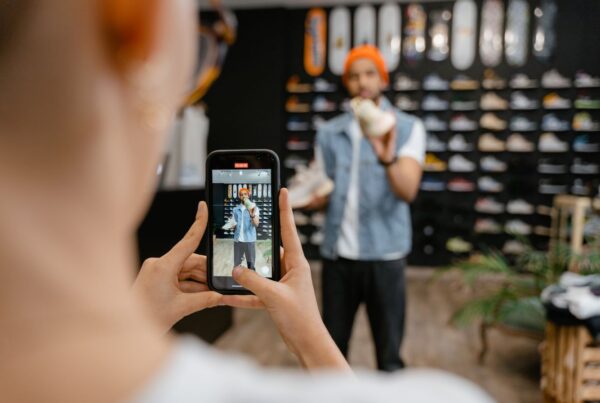Experience and purchasing journey: the alliance between physical points of sale & e-commerce as well as operational marketing & digital marketing
Not so many years ago, the pervasiveness and affordability of e-commerce unleashed a major havoc. Nevertheless, with the passage of time, business models based solely on online sales have started to experience limitations. Pure players started to lose ground to customers in search of a more traditional in-store experience: in 2017, if the Web remains a key business driver, e-commerce cannot be solely based on a virtual experience. To remain attractive, both the online and offline models that were once competing against each other now need to converge to be able to survive.
Online and offline businesses are stepping into the « friennemy economy » where cooperation goes hand In hand with competition. Aggressive special offers and other incentives such as the Black Friday or sales during the holiday season are no longer sufficient. To remain sustainable, both business models need to be redesigned.
Survival within a convergent economy
The takeover of Whole Foods by Amazon, and the alliance between Whole Foods and Google were two major announcements during summer 2017. Both these strategic alliances symbolize the epitome of the urge to rethink business processes and ensure growth at a time when business models are experiencing deep, insightful transformations.
E-commerce once was a major upset to the retail industry, but today, this discipline is itself disrupted by players who manage to make the best use of both traditional and Web shopping. Hybrid models are therefore emerging to support the requirements of customers who are always on the lookout for innovation. Brands that merely stick to their traditional business model are losing ground to their competitors as they are reluctant to switch to strategies that focus on what is becoming the cornerstone of a successful business strategy: customer experience.
WiFi, a powerful tool to bridge the gap between online and offline data
The consumer’s habits for traditional in-store shopping were not wiped out by the Internet. As retailers saw the Internet becoming commonplace, they adopted a strategy of reaping market share from their online counterparts; however, this has fizzled out today. Today, neither of these two classes of players are compelled to compete against each other as they can work in a more collaborative, complementary and productive way.
It is in the best interest of the online market to adopt real-world stores while retailers are invited to leverage the benefits of the Web at their points of sale. Wi-Fi is an enabler to that extent. As a business asset, a loyalty driver and a powerful proximity marketing tool, Wi-Fi paves the way to a « phygital » model that leverages the best of both worlds, with the goal to design an end-to-end, targeted and consistent customer experience. Wi-Fi can no longer be seen as a cost center, but rather, as a true asset to deliver an efficient strategy that dynamically extends the reach of any brand content to qualified prospects. The purpose is really to emancipate oneself from mass marketing and, instead, set the emphasis on improving customer knowledge, so as to target and retarget each individual in the most consistent way.
Online and offline businesses are no longer models that are conflicting, but rather, complementary. The real challenge for any brand is to successfully combine both channels to improve the experience of all customers and make it more seamless, rewarding and powerful. It’s high time to give up mass marketing and get back to the basics: a personalized tracking of each customer that stands as the ultimate means for retailers to expand their offerings, while providing the proximity experience that consumers are craving for.








